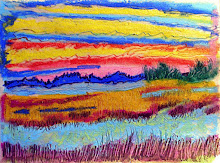Don Schaeffer, Ph.D.
When I was a student I performed a rather naive investigation to see if principles of apparent motion applied also to sound. In visual space, in order to induce the appearance of motion between two points you perform the following steps:
1) Make point A visible and point B not visible,
2) Make point A not visible and point B visible.
The parameters of time between steps 1) and 2) and size, intensity and similarity of the visibility of A and B determine how real the appearance of motion is and the apparent speed of motion.
In visual space, a similar procedure can make one shape appear to change into another when the principles of apparent motion are applied to all points along the shape of the visual object.
I wanted to see if a similar procedure can induce the experience of motion in sound. The question of what motion in sound meant didn’t even occur to me when I started my little experiment, but ideas on the subject evolved from my work.
I rigged a turntable two produce sounds when a wire circuit was closed by hitting a strip of copper. There were two strips of copper to produce so that two sounds (call them X and Y) were produced in rapid succession.
My experience of the results was that principles of motion are very different for visually than temporally extended spaces. For one thing, I could not bring X and Y close enough together in time to produce a sense of transition from one sound to another. The reason was that my primitive equipment produced not pure sounds but small sound objects including an initial click, a sound, and a final click. The most I could get was a point when the two events appeared to merge into one sound object, click sound click click sound click.
I concluded that shape and motion are confounded in temporally extended space. Any qualities that articulate an object will militate against its merger with another object.
Further observations were that if a shape is articulated, it will probably be experienced as a separate shape. Brief shapes appear to retain quasi permanence, apparently stored in a shape buffer. Longer shapes will be experienced as movement of the present point.
Friday, July 27, 2007
Subscribe to:
Post Comments (Atom)

No comments:
Post a Comment